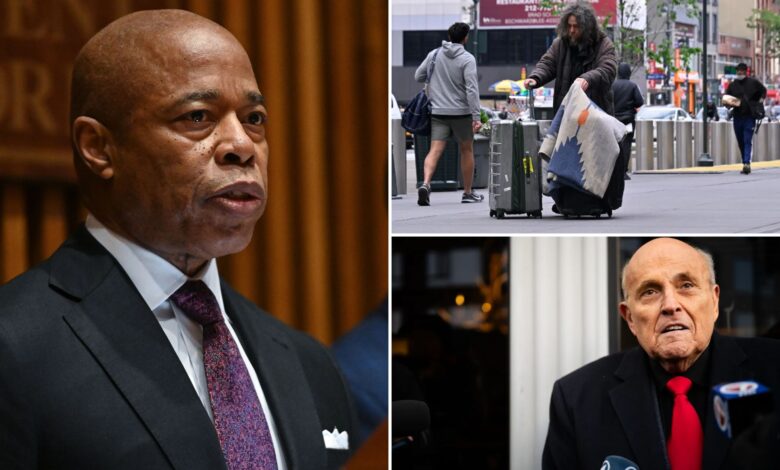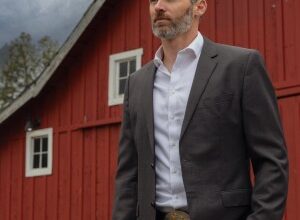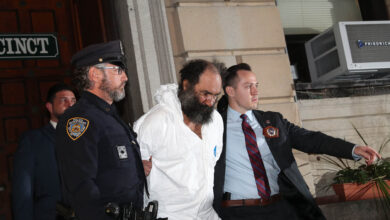Mayor Adams wants donors to save New York

Can private philanthropy bail out New York City?
Late last year, Mayor Adams pleaded with wealthy New Yorkers to help fill the gaps in the City’s budget.
“This is . . . an all-hands-on-deck moment,” Adams said at a Police Athletic League luncheon. “I’m going to need you more than ever to support many of these organizations like PAL, Robin Hood Foundation, and others.”
But the money is not flowing the way it once did, and the mayor and others who are hoping for private windfalls should understand why.
The nonprofit Mayor’s Fund, which works with philanthropists and community partners to supplement the budgets of city agencies, has suffered a drastic decline in giving, from $77 million in FY2020 to under $10 million in FY2022.
While neither Adams nor his predecessor Bill de Blasio could hope to match the philanthropic funds raised under and contributed by Mike Bloomberg, the decline in recent years is significant and may prove difficult to reverse.
A recent article in The New York Times noted that agencies facing budget shortfalls, like the New York Public Library, have not been able to make them up through private donations.
In addition, the mayor’s call for help with the migrant crisis has been met with a tepid response from the city’s donors.
His plea brought in less than $3 million in cash donations, plus the equivalent of around $2.7 million in the form of in-kind contributions.
That is a paltry sum when compared to the mayor’s estimate that the migrant crisis may cost the city as much as $12 billion over the next few years.
The causes for this decline are as concerning as they are varied.
As has been well documented, New York City lost thousands of wealthy residents during the pandemic. Many have not returned.
Those who stayed are worried about the City’s economic future, with good reason.
Continuing vacancies in commercial office buildings are signs that tax revenues may continue to decline, putting more pressure on city budgets.
That in turn could lead to tax increases, which are likely to drive even more wealthy residents out of New York.
In terms of helping the city cover shortfalls, many donors and philanthropists take the view of a parent helping adult offspring: they are willing to contribute if it will fix the problem.
Unfortunately, they do not think this is likely to be the case with the issues New York City is now facing.
The migrant crisis, for instance, shows no signs of retreating.
Although Adams has asked for federal aid to deal with the challenge, his pleas have so far fallen on deaf ears.
Nor does it appear that any efforts are on the horizon to stem the flow of migrants from across the southern border, and into New York and other big cities.
A century ago, philanthropists did a great deal to help settle newcomers in the city.
They assumed, in offering that assistance, that it would help recent arrivals find legal work, housing, and educational opportunities for their children, and assimilate them into the culture of their new land. In time they would turn themselves into patriotic American citizens.
Today such a path no longer seems workable, given the magnitude of the crisis and the fact that most migrants have entered the country illegally and without documentation — not to mention a school system that has little interest in creating a “melting pot.”
There are some problems that donors need the government to solve — crime and homelessness, among them.
No one can expect philanthropists to move the mentally ill off the streets, prevent violence in schools, or maintain effective police and fire departments.
It is reasonable to ask private donors to support libraries, soup kitchens, medical services, arts centers, and recreational programs, but, in exchange for such support, the government must do its part where it has primary responsibility
Philanthropists are unlikely to donate funds to fill gaps created by cuts in public spending — a futile enterprise akin to the boy trying to plug the dike with his fingers.
They prefer to invest their money into areas the city ignores or where it is not effective.
This is one reason why so many of the city’s wealthy have supported charter schools.
These investments have allowed the city’s children to receive a decent education.
Unlike, say, giving $100 million to a public school system as Mark Zuckerberg did with Newark and Bill Gates did with New York City.
Donors seek progress and improvement of the kind they can see — not millions wasted with no visible results.
New York City may have entered a “doom loop” where new problems make claims on the budget, the budget must then be cut, donors become discouraged about the scale of public woes and cut funds — things get worse, budgets are cut again, repeat.
Recently, however, the mayor announced that the budget outlook has improved and that some of the cuts he threatened might not be necessary after all.
Whether this turns out to be true, Adams has compromised his credibility among private donors.
Having cried “wolf” once, they are now less likely to believe him the next time he knocks on their door calling for help.
James Piereson is a senior fellow at the Manhattan Institute; Naomi Schafer Riley is senior fellow at the American Enterprise Institute




